Lower back pain is one of the most common and debilitating injuries after a car accident. Even a seemingly “minor” fender bender can cause lasting damage to the lumbar spine, nerves, and supporting muscles. If you’ve been in a crash and are now suffering from back pain, you’re not alone—millions of Americans each year experience similar injuries. Understanding the common causes of lower back pain after a car accident can help you recognize symptoms early, seek proper medical care, and protect your legal rights if another driver’s negligence caused your injuries.
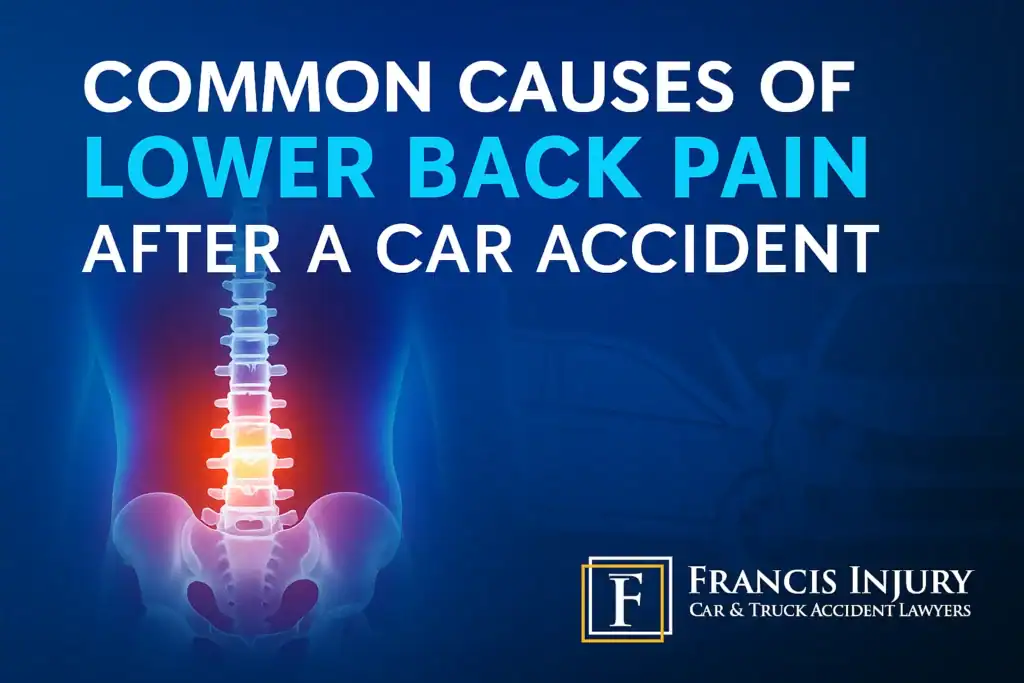
At Francis Injury, we have decades of experience helping car accident victims across the country recover compensation for their medical bills, lost wages, and pain and suffering. This guide will break down the medical science, insurance tactics, and legal strategies surrounding back injury claims—so you’re fully informed and ready to act.
Why Car Accidents Frequently Cause Lower Back Pain
The lower back, also called the lumbar spine, is highly vulnerable in auto collisions because it absorbs much of the body’s force during impact. According to the CDC, sudden acceleration and deceleration in crashes places enormous strain on the spine, even at speeds as low as 10–15 mph. Whether it’s a rear-end, side-impact, or rollover accident, the forces can damage discs, nerves, ligaments, and vertebrae.
When the body is thrown forward and backward in a collision, the spine’s natural alignment is disrupted. This can result in anything from minor sprains to catastrophic fractures requiring surgery.
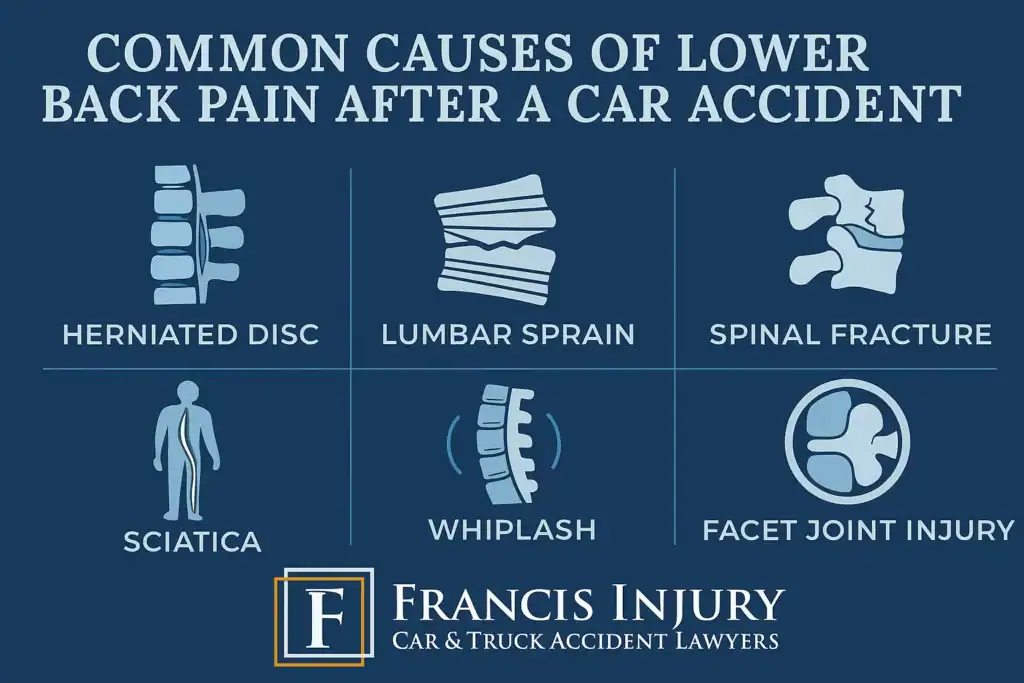
Common Causes of Post-Accident Lower Back Pain
- Herniated Discs: The sudden pressure from a crash can rupture spinal discs, pushing the inner material out and compressing nerves. Symptoms often include pain radiating down the legs, tingling, and numbness.
- Lumbar Sprains and Strains: Ligaments, muscles, and tendons can overstretch or tear, causing inflammation, stiffness, and limited mobility.
- Whiplash-Related Lower Spine Injuries: While commonly associated with the neck, whiplash forces also affect the lumbar spine, leading to lasting pain.
- Spinal Fractures: High-impact crashes may fracture vertebrae, sometimes requiring surgical stabilization with rods or screws.
- Sciatica & Nerve Compression: Trauma can pinch the sciatic nerve, causing sharp pain that radiates from the back down one or both legs.
- Facet Joint Injuries: These small joints between vertebrae can suffer damage, resulting in localized back pain and restricted movement.
- Soft Tissue Injuries & Bruising: Muscles, ligaments, and connective tissues often suffer microscopic tears that can cause weeks or months of discomfort.
- Chronic Pain Syndromes: In some cases, acute injuries develop into long-term pain conditions requiring ongoing care.
Symptoms to Watch For After a Car Accident
Not all back injuries show symptoms immediately. In fact, adrenaline after a crash often masks pain. According to the Mayo Clinic, red flags that warrant urgent medical attention include:
- Severe pain that worsens with movement
- Numbness or tingling in the legs or feet
- Loss of bladder or bowel control
- Weakness in the lower extremities
- Pain radiating into the hips or legs
- Inability to stand, walk, or sit comfortably
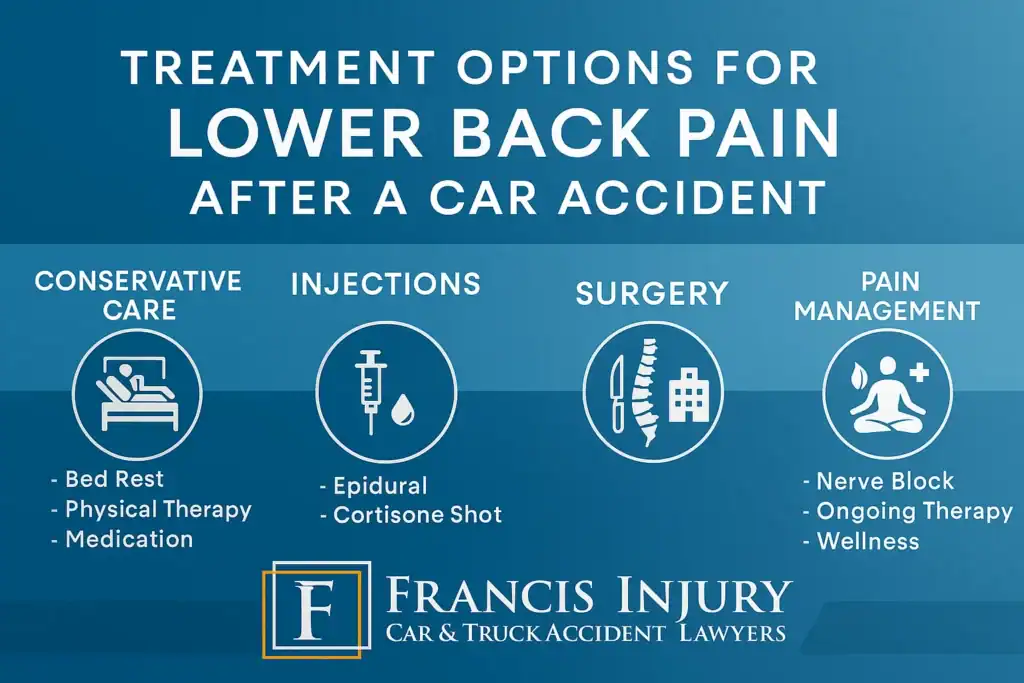
Medical Treatment Options for Lower Back Injuries
Treatment depends on the severity of the injury, but commonly includes:
- Conservative Care: Rest, physical therapy, chiropractic adjustments, massage, and medications (NSAIDs, muscle relaxers).
- Injections: Cortisone or epidural steroid injections can reduce inflammation and pain.
- Surgery: For severe herniations or fractures, options include discectomy, spinal fusion, or laminectomy.
- Pain Management: Chronic pain may require long-term pain management strategies, including nerve blocks.
Long-Term Impact of Back Injuries
Lower back injuries are not just painful—they can disrupt every aspect of your life. Victims may struggle to return to work, participate in daily activities, or even sleep comfortably. The National Institute of Neurological Disorders and Stroke notes that back injuries are among the leading causes of disability worldwide. Left untreated, these injuries can result in lifelong complications and financial strain.
Insurance Company Tactics You Should Know
Insurance adjusters often downplay back injuries by claiming they’re “just soft tissue” or “age-related.” They may request old medical records to argue your pain pre-dated the crash. Don’t be fooled—these tactics are designed to minimize your settlement. That’s why working with an experienced car and truck accident lawyer can make the difference between a denied claim and fair compensation.
Steps to Protect Your Back Injury Claim
- Seek medical attention immediately after the accident—even if symptoms seem minor.
- Follow all treatment plans and attend follow-up appointments.
- Document your pain levels, limitations, and how the injury affects your daily life.
- Keep records of medical bills, lost wages, and out-of-pocket expenses.
- Contact a personal injury lawyer before speaking with insurance adjusters.
Frequently Asked Questions
Straight answers to the most common questions we hear after a car or truck accident.
How soon should I see a doctor after a crash?
Immediately, even if you feel “okay.” Adrenaline can mask injuries, and early medical records link your condition to the accident.
The other driver’s insurer is calling. Should I give a recorded statement?
No. Politely decline until you’ve spoken with an attorney. Adjusters are trained to use your words against you to minimize claims.
What if my back pain started days after the accident?
Delayed symptoms are common. Document when pain began and get medical care right away—delayed onset can still be tied to your crash.
How long do injury cases usually take to settle?
It depends on severity, treatment length, and disputes over liability. Some settle in months; complex cases may take over a year.
What damages can I recover?
Typical damages include medical expenses, future care, lost wages, diminished earning ability, pain and suffering, and property losses.
Do I have to pay anything upfront to hire Francis Injury?
No. We operate on a contingency fee basis—you pay nothing unless we win your case.
What evidence helps the most in a back injury claim?
Medical records, imaging (X-rays/MRIs), accident reports, witness contacts, and a pain journal documenting how the injury affects your life.
Will seeing a chiropractor or physical therapist hurt my case?
No. Following your doctor’s treatment plan, including PT or chiropractic care, strengthens your claim by showing consistent recovery efforts.
Should I post about the accident on social media?
Avoid it. Insurers may monitor your posts and misinterpret them. Keep accounts private and don’t post about injuries or activities.
How do I get started with a free case review?
Call (817) 329-9001 or request a consultation online. We’ll review your case and explain your options.
Why Choose Francis Injury
At Francis Injury, we have recovered millions for car accident victims nationwide. Our dedicated legal team understands the medical complexity of lower back injuries and knows how to fight insurance companies that try to minimize your suffering. With offices in Texas and a proven track record of success, we’re here to protect your rights and maximize your recovery.
Call us today at (817) 329-9001 or use our free online consultation form to get started now.
- Can I Sue Lyft After an Accident?

- Why Do You Need a Personal Injury Lawyer?

- Texas Personal Injury Protection (PIP) Insurance: A Complete Guide for 2025
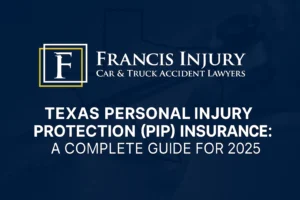
- What is the Average Payout for a Motorcycle Accident?
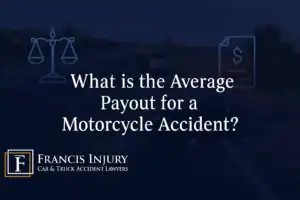
- What Happens When a Trucking Company Violates FMCSA Rules?

- What You Should Know if You Have Been Involved in a Truck Accident

- Do You Have to Report an Accident to Your Insurance if It’s Not Your Fault?

- The Role of Witnesses in Truck Accident Cases: Eyewitnesses, Experts, and Winning Your Claim
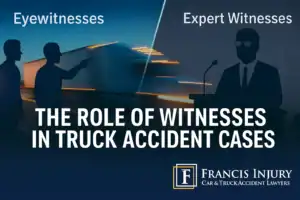
- What Is the Average Wrongful Death Settlement Amount in Texas?
